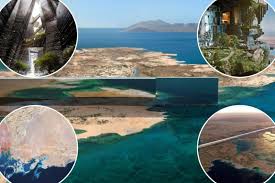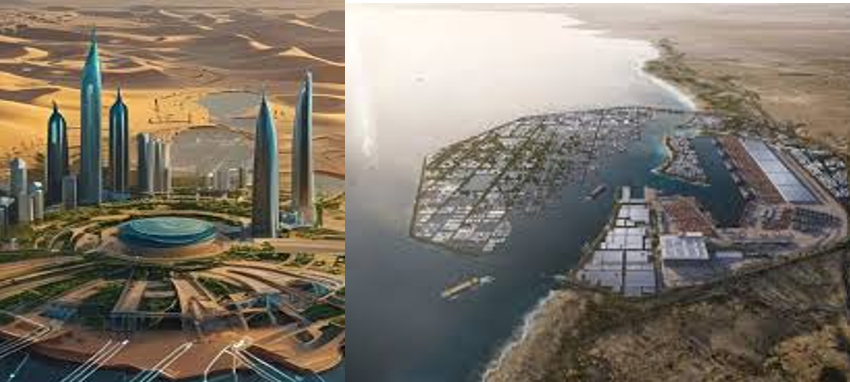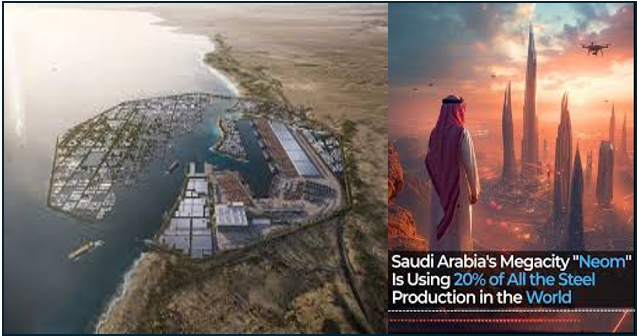What is NEOM?
NEOM is Saudi Arabia’s ambitious mega-city project, envisioned as part of the country’s Vision 2030 plan to diversify its economy beyond oil. Located in the northwestern Tabuk Province, it spans more than 26,000 square kilometers and aims to redefine urban living with cutting-edge technologies, renewable energy, futuristic architecture, and sustainable living solutions.

The project is not just a city—it’s a futuristic ecosystem combining smart technology, renewable energy, luxury tourism, and economic zones to attract global businesses.
A Steel-Hungry Vision
According to recent reports, NEOM is consuming nearly 20% of the world’s total steel production. This staggering figure underlines both the scale and ambition of the project. Steel is the backbone of construction, particularly in mega-infrastructure projects. NEOM’s demand has made it one of the largest consumers of steel in the world, impacting global supply chains and pricing.
Why So Much Steel?
The answer lies in the scale and design of NEOM’s sub-projects:
- The Line: A 170 km long, futuristic linear city that will host millions of residents in high-rise mirrored towers.
- Oxagon: A massive floating industrial hub designed to be the world’s largest floating structure.
- Trojena: A mountain-based smart tourism and ski resort.
- Sindalah Island: A luxury island destination on the Red Sea.
Each of these requires enormous amounts of structural steel for construction, advanced building frameworks, and futuristic designs.
Impact on Global Steel Markets
NEOM’s demand for steel has ripple effects globally:
- Price Increases: High demand puts pressure on steel prices worldwide.
- Supply Chain Strain: Countries supplying raw materials such as iron ore and coal face rising export needs.
- Shift in Trade Patterns: Steel exporters are prioritizing contracts with Saudi Arabia, altering trade balances.
This massive consumption underscores how one mega-project can influence global commodity markets.
Sustainability and Environmental Concerns
While NEOM is marketed as a green city powered by renewables, its construction phase paints a different picture. The steel industry is one of the world’s biggest contributors to carbon emissions. Critics argue that such enormous consumption conflicts with sustainability goals.
However, Saudi Arabia has announced investments in green steel production, exploring hydrogen-based alternatives and low-emission methods to align NEOM’s construction with environmental goals.
Economic and Strategic Importance

NEOM is more than a construction project—it’s a strategic investment:
- Diversifies Saudi Arabia’s economy beyond oil.
- Attracts global talent, tourism, and investment.
- Reinforces Saudi Arabia’s position as a regional innovation hub.
By tying together futuristic infrastructure and high-tech industries, NEOM is designed to make the kingdom a central player in the global economy of the future.
Looking Ahead: Can NEOM Deliver?
While the vision is bold, challenges remain:
- Enormous Costs: Estimated at over $500 billion, funding remains a hurdle.
- Logistical Barriers: Building futuristic mega-cities in desert terrain requires groundbreaking engineering.
- Global Skepticism: Critics question whether NEOM will become a reality or remain a symbolic project.
Still, if completed as planned, NEOM could be a transformational city of the future, reshaping how the world thinks about urban living and mega-projects.
My Final Thoughts:
NEOM’s consumption of nearly 20% of global steel production shows the unprecedented scale of Saudi Arabia’s vision. It’s a project that combines ambition, technology, and strategy—but also raises questions about sustainability, costs, and long-term feasibility. Whether it succeeds or struggles, NEOM will remain a symbol of how nations are attempting to build their futures in the 21st century.
















